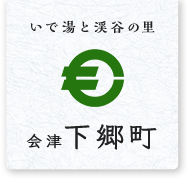Nakayama Wind Caves

The wind caves (fuketsu) are an unusual geological phenomenon that keeps the ground surrounding the caves cool year-round. Even at the height of summer, the surface temperature usually remains between 5˚C and 10˚C, creating an environment where alpine flowers grow between April and September. A hiking trail connects six designated spots where visitors can feel the cool air coming out of the ground. The trail is suitable for all ages. It is also possible to walk from the caves to other local attractions, such as the hot spring village of Yunokami Onsen or To-no-Hetsuri (river gorge). The Nakayama wind caves and the surrounding area became a National Natural Monument in 1964.
Ancient Origins
The Nakayama wind caves are thought to have been formed several millions of years ago, when molten rock was pushed up to the surface of the earth following a volcanic eruption, creating cone-shaped caves. These caves consist of many layers of rocks with gaps between them. Warm air from the earth’s surface enters the gaps and cools as it passes over the rocks, then is blown back up to the surface. This phenomenon creates the ideal environment for alpine plants to thrive. It attracted attention in 1955 when a local resident showed specimens of prickly wild rose to a botanical researcher. Although the plant usually grows at altitudes of 1,500 meters or higher, it thrives at 550 meters in the Nakayama wind caves ecosystem. Nakayama has the largest colony of prickly wild rose in Honshu, Japan’s largest island, and May is the recommended viewing season.
Nature’s Refrigerator
One of the most impressive spots on the trail is a pavilion built around the largest of the wind caves. Although it is not clear who first discovered this particular cave, local residents used it as a natural refrigerator over the centuries. During the hot and humid summer, the cave was used as a storehouse for fruit, vegetables, and meat, with the cool air protecting the food from spoiling. From the late 1920s to the early 1940s, an enterprising trader from a neighboring town rented the pavilion from the town of Shimogo and used it for storing produce. The cave has also been utilized by the sericulture industry, as the cool temperatures provided the ideal environment for storage of silkworm eggs until it was time for them to hatch.

This English language text was created by the Japan Tourism Agency.
この英語解説文は観光庁の地域資源の多言語解説整備支援事業で作成しました。








更新日:2022年02月08日